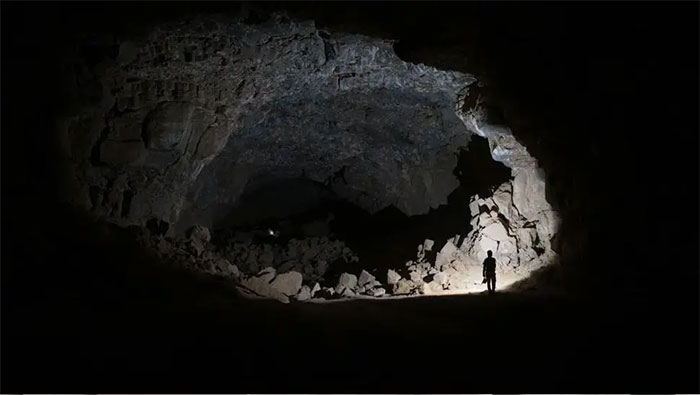A majestic lava tube in the Arabian Peninsula has surprised archaeologists by revealing human traces .
According to Live Science, it is a giant lava tube called Umm Jirsan located in the Harat Khaybar volcanic region, in present-day Saudi Arabia.
Although ancient people are known to have inhabited the Arabian Peninsula long into prehistoric times, the remaining sites are few as the arid conditions in the area do not preserve artifacts well.
But a cave that is part of a lava tube is another matter.
 Umm Jirsan lava tube, formed by ancient volcanic activity – (Photo: PALAEODESERTS Project).
Umm Jirsan lava tube, formed by ancient volcanic activity – (Photo: PALAEODESERTS Project).
The great Umm Jirsan with a length of up to 1,481 m is not only a safe residence for ancient people, but also retains a valuable archaeological treasure.
Inside Umm Jirsan, a research team from Australia, England, Germany, the United States and Saudi Arabia found nine sets of human remains, many pieces of fabric, wooden furniture, and rock art representing animals. domestication…
According to the authors, there is evidence of one of the communities that settled in the area at least 7,000 years ago , possibly more – up to 10,000 years – and belonged to the earliest civilizations on Earth. , located on the Arabian Peninsula.
The artifacts portray the life of prehistoric farmers, with farming and animal husbandry thriving until the Bronze Age.
However, humans did not live in these lava tubes for long.
During the later years that the tube was used, it became a stopping point along the livestock route, where herdsmen could find water and a place to rest while driving their herds past.
Before that, lava tubes were also associated with hunting activities and may have been a piece of the local economy during the Bronze Age because they were underground routes for transporting volcanic rocks.
It also provides an interesting confirmation for space scientists: The idea of building underground habitats in lava tubes on the Moon by the Japan Aerospace Exploration Agency (JAXA) is something new. completely realistic.





